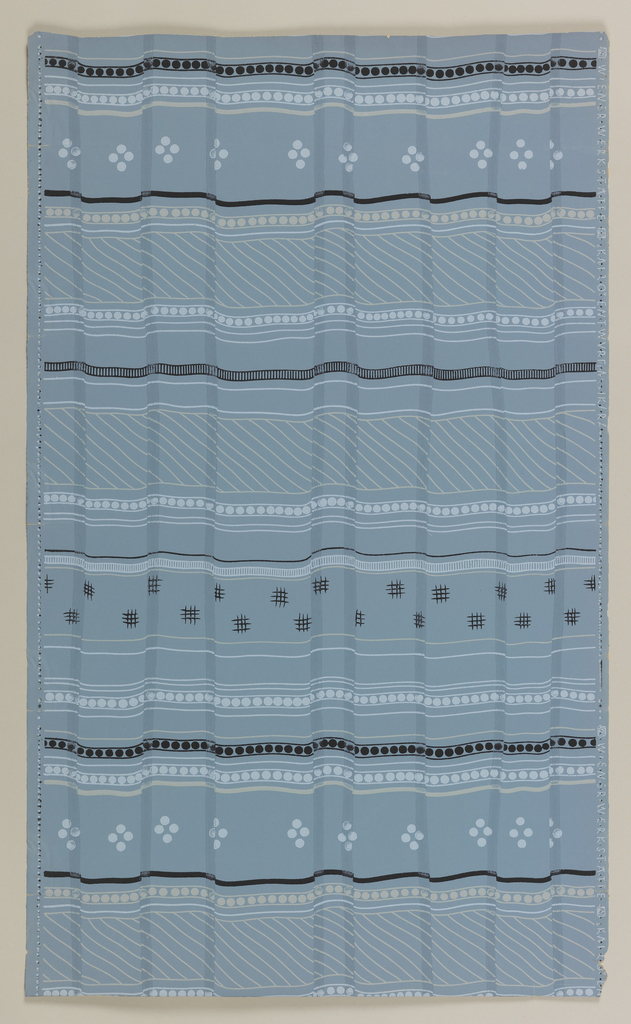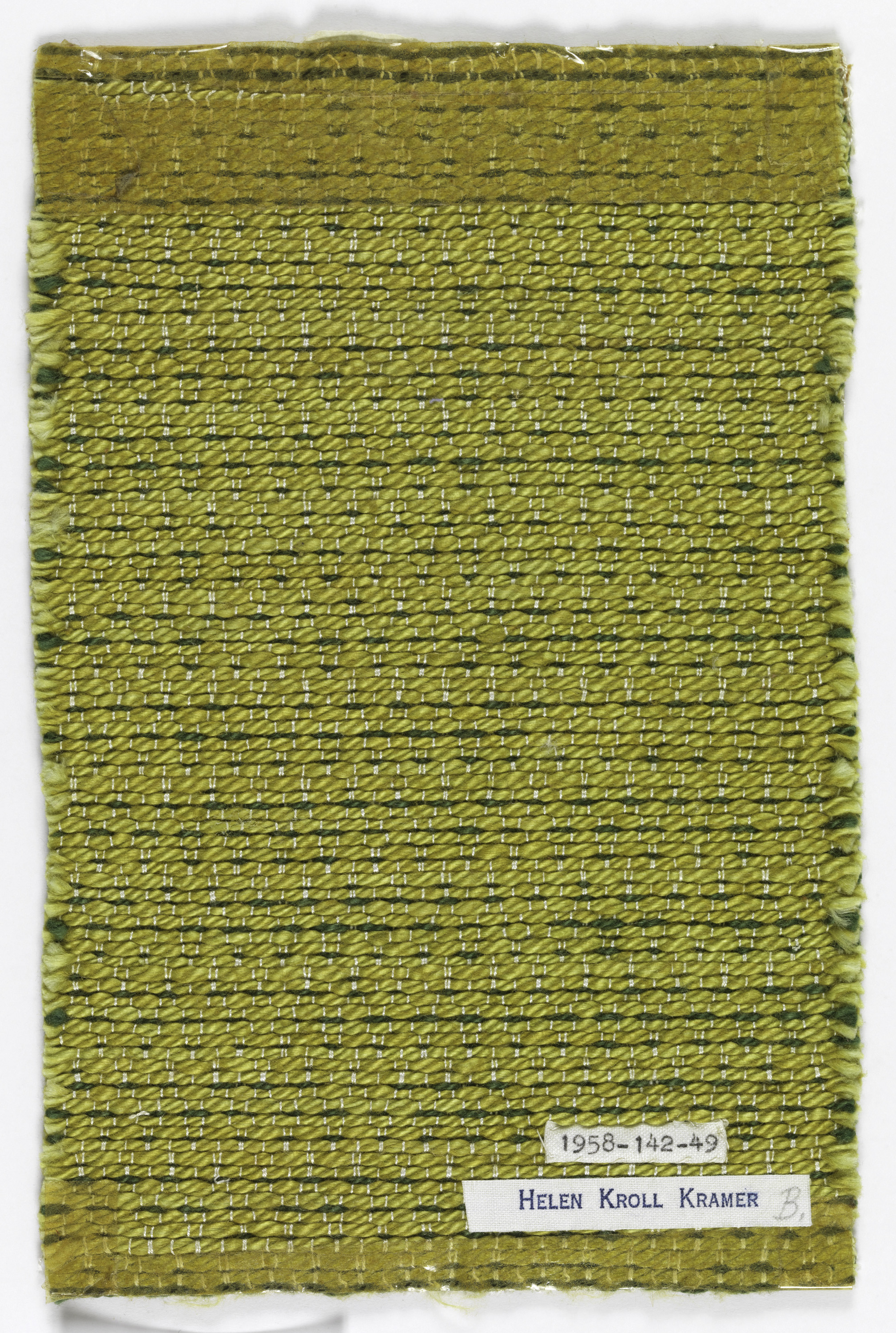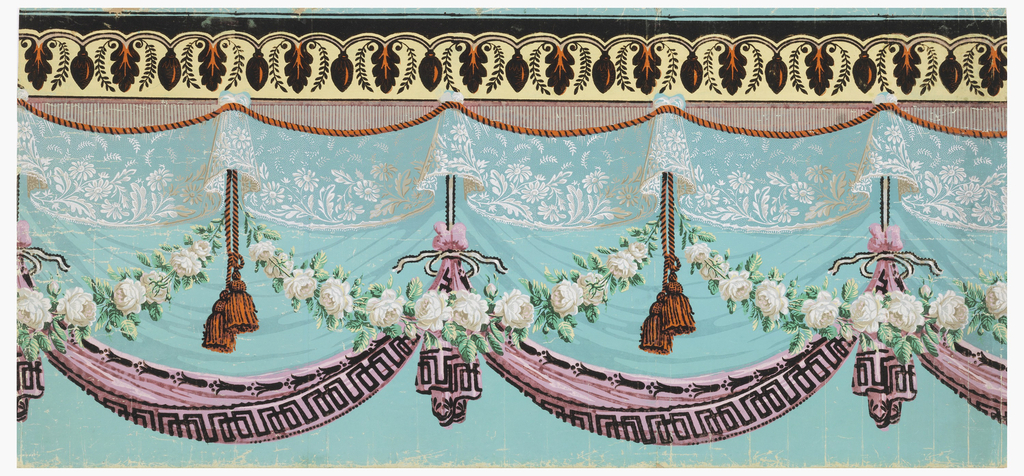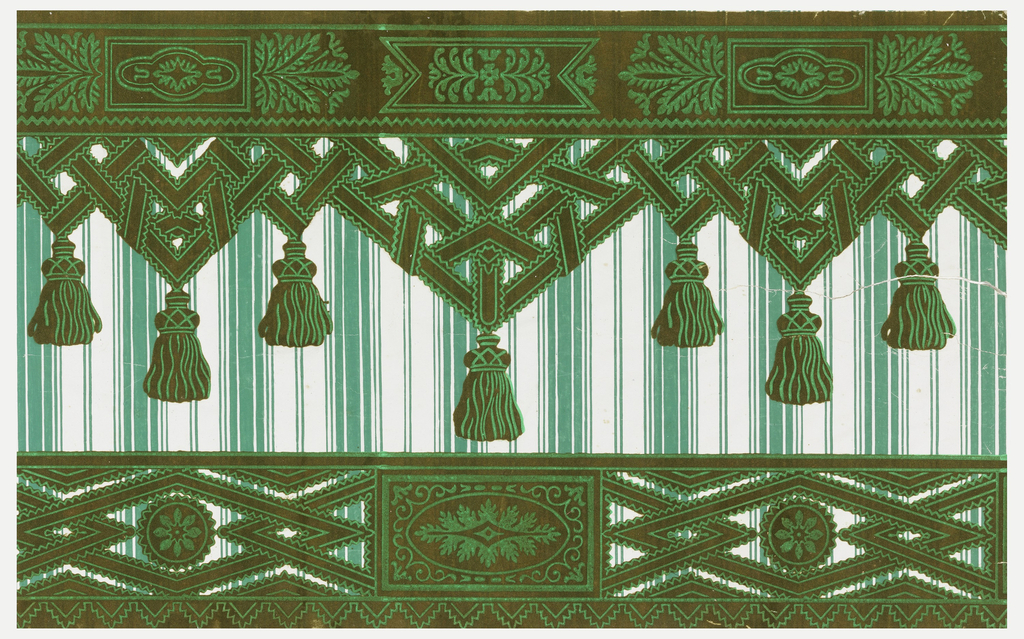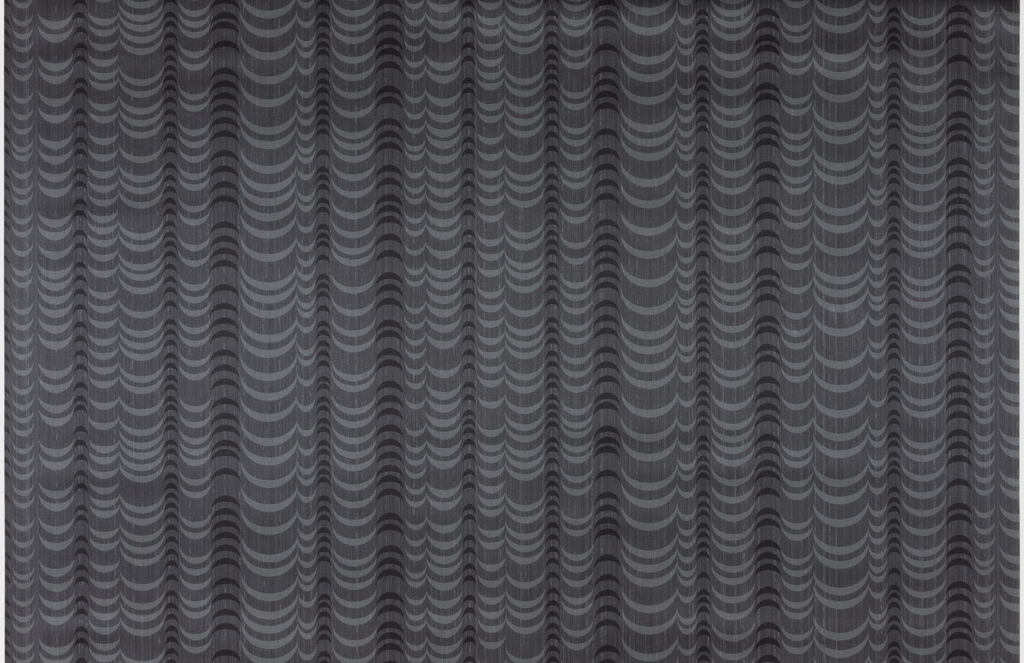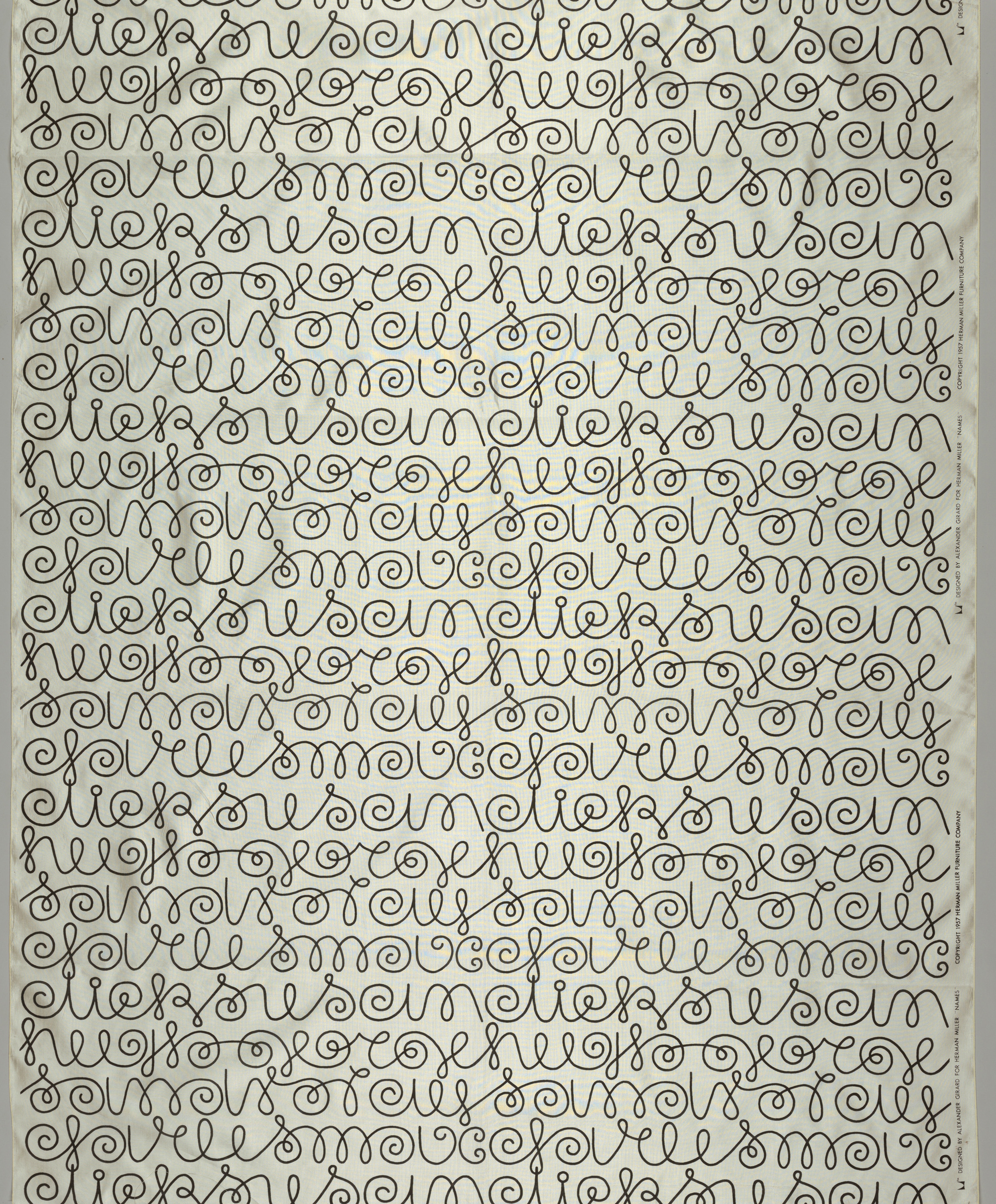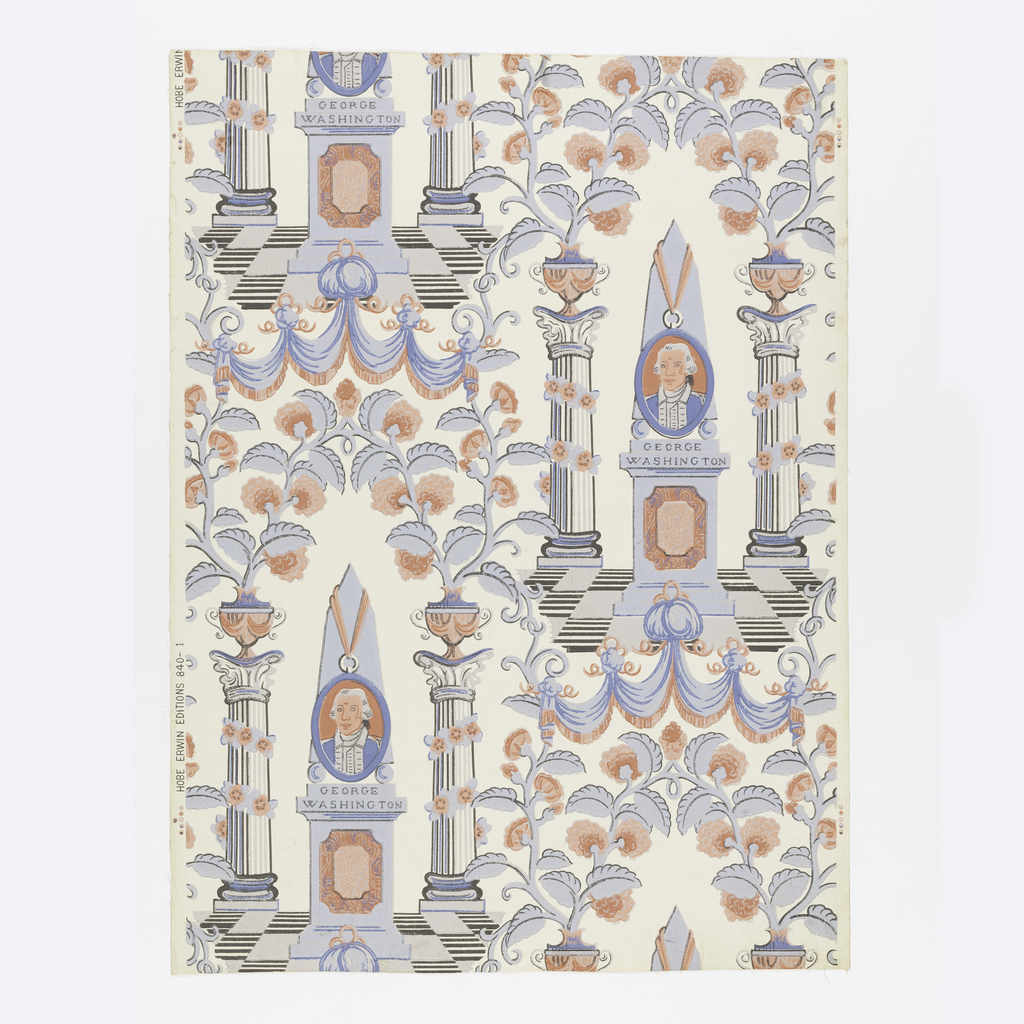Here is an interesting version of a drapery wallpaper design. Wallpapers imitating draperies have been a small but elegant genre since the time of Napolean, when walls draped in fabric were popularized by the design and decorating team of Percier and Fontaine, largely credited with creating the Empire style. Many of the finer papers were...
This funky little chartreuse sample seems perfectly suited for an American mid-century interior. Woven by Helen Kroll Kramer between 1930-1958, it is composed of wool and rayon with contrasting bands of lime and pea green. Kramer is renowned as a successful 20th century artist and purveyor of handwoven textiles for upholstery and drapery. With her...
Traditionally, wallpapers have imitated more expensive materials, such as architectural details, painted wall decorations, wood grains, marble, and, most often, textiles. In the mid-18th century when wallpapered rooms became a prevailing fashion in England and France, wallpaper borders were as important a decorative element as the coverings themselves. A brilliant swag of printed paper flowers,...
Elinor Merrill was the pre-eminent New York dealer of antique European textiles and wallcoverings. A specialist in French textiles, Merrill served as a consultant to the Metropolitan Museum of Art and to the Art Institute of Chicago. She also assisted in the development of the collections of the Cooper Hewitt and the Winterthur museums. After...
This drapery pattern called Broadway is part of the first collection of wallcoverings designed by Boym Partners for Wolf-Gordon. The collection was inspired by the Boym’s travels and this trompe l’oeil pattern of drapery folds was inspired by the curtains in Broadway theaters. The design creates a strong vertical pattern and is rendered in a...
Names was designed by Alexander Girard for Herman Miller in 1957. He used typography as pattern in many of his works – from textiles and wall coverings to signs, logos, and even menu layouts — by playfully mixing, transforming, and inventing fonts for whatever the project required. Sometimes he created entire alphabets while other times...
This wallpaper is a reproduction of an earlier American wallpaper produced ca. 1800. Created during the waning years of the Colonial Revival movement it bears a strong neoclassical look with its inclusion of columns, obelisk and drapery swags. The design is in the pillar and arch format which was a popular British fashion from the...
I have always been captivated by the realism and voluptuousness of this frieze. This trompe l’oeil design, with its drapery swags, ostrich plumes, jewels, and tassels, is an over-the-top depiction of luxury materials. The attention to detail required to bring this degree of realism to light is exemplary. The drapery swags are flocked, then overprinted...
